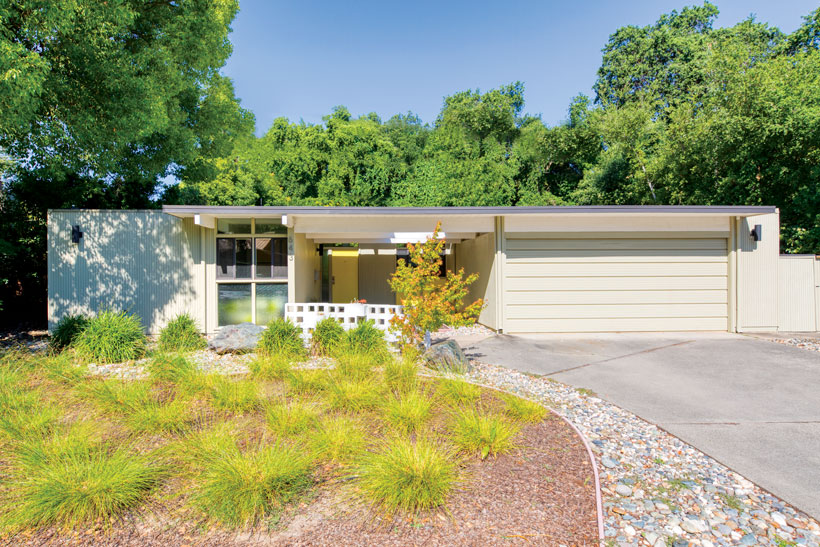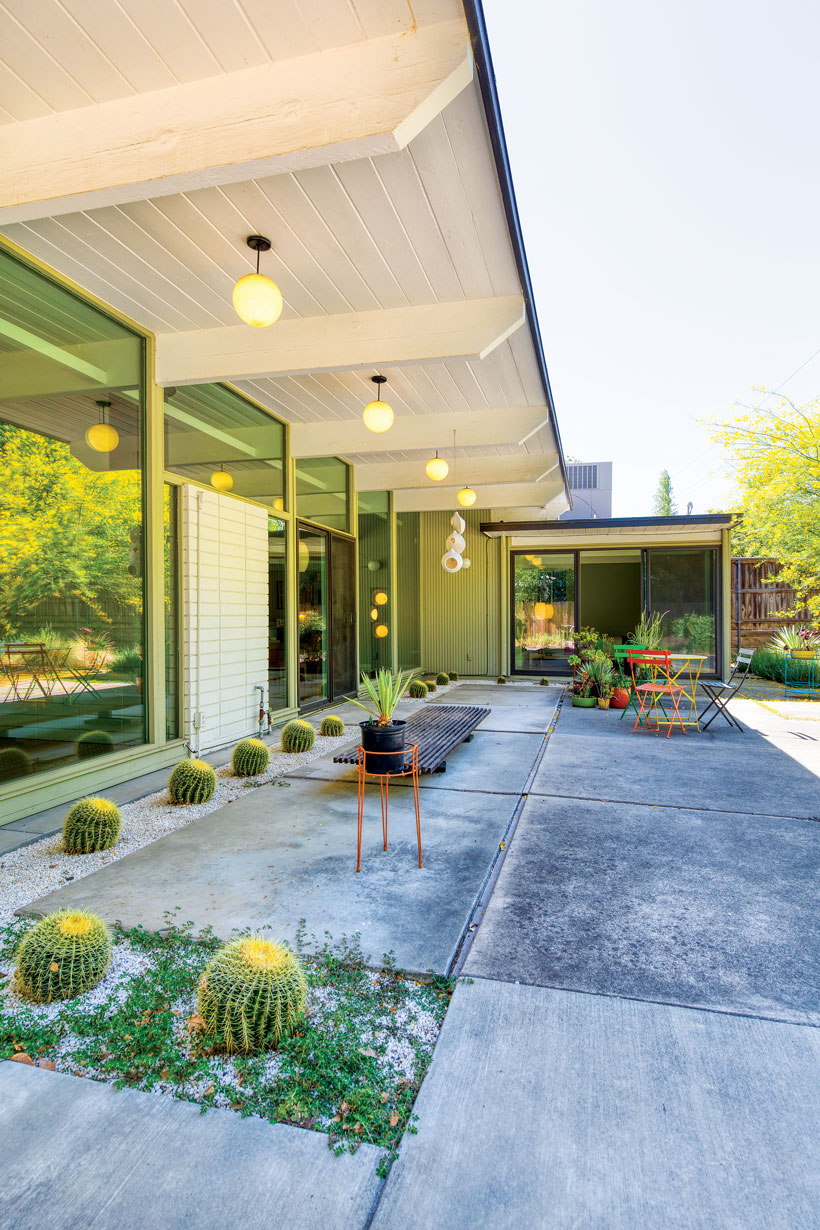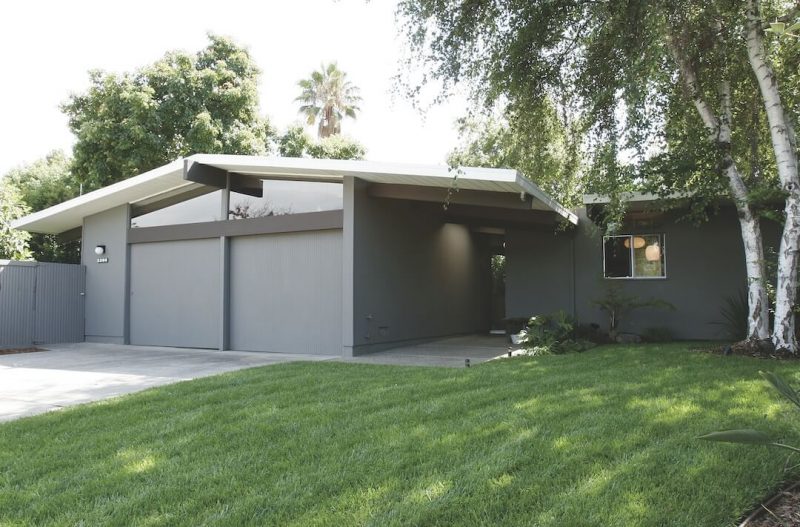Joseph (Joe) Eichler (1900–1974) was the first merchant builder to work closely with postwar housing architects to develop stylish, mass-produced tract homes. He wanted to construct them with quality materials that gave the homes a custom-designed look. Eichler’s unwavering commitment to quality design and materials produced homes at the pinnacle of accessible and stylish Mid Century Modern residential architecture and are highly sought-after today.

Usonian Inspiration
Eichler Homes, Inc. built nearly 11,000 homes in California between 1947 and 1974. Joe Eichler began his career in wholesaling but switched career paths later in life. Eichler’s interest in modern architecture began after he rented Frank Lloyd Wright’s Usonian Bazett House in 1942. The home inspired Eichler to launch a new career in creating architect-designed modern houses for the masses.
In 1948, Eichler hired Robert Anshen—a Wright protégé—to design post-and-beam houses for his developments. “One of Anshen’s earliest designs for Joe, the Eichler family home in Atherton from 1950, carried over many of the Wrightian elements found at the Bazett. Anshen took some of that with him while designing Joe’s earliest tract homes,” explains Marty Arbunich, publisher of the Eichler Network and CA-Modern magazine.

Strategic Design
Eichler was the first to use Anshen’s concentric circle “bullseye” plans to create culs-de-sac that provided privacy without sacrificing community. This is an element still important to Eichler homeowners today. “With our CA-Modern magazine, we’ve profiled scores of Eichler neighborhoods over the years. We’ve discovered that some are more tight-knit than others. But, all of them, to some extent, celebrate their common lifestyle like no other non-Eichler neighborhoods I know,” says Marty.
To design his homes, Eichler collaborated with architecture firms Anshen & Allen, Jones & Emmons and later, Claude Oakland. One of the most significant design enhancements was A. Quincy Jones’ inclusion of an atrium in Eichler homes from 1957 onward. “With the arrival of the atrium, coupled with nearly a decade of homebuilding under Joe’s belt, Eichler Homes was now entering its prime years. They were developing models that were spectacular and larger and more open than ever,” says Marty. Eichler developments were not only affordable but available to people of all racial backgrounds. Selling homes to Black and Asian families broke de facto segregation barriers.

Through the Decades
Minimalist Mid Century Modern residential architecture enjoys wide appreciation today. However, Eichler’s homes have not always been popular. “By the 1980s, at a time when Mid Century Modern in general had fallen out of favor, the Eichlers were unfairly criticized as being cheap construction and called ‘the 10-minute burn’ when it came to facing fire,” according to Marty. “At the onset of the 1990s, the tide was beginning to turn in a big way.” These homes are now popular among contemporary buyers. Developers either secure permission to build new Eichlers using the original plans or create new designs that directly reference the original buildings.

Joseph Eichler’s commitment to accessible design elevated his homes and neighborhoods to icons of Mid Century Modern residential architecture that continue to impact the way we design homes today. “There were scores of modern builders around the country back then, but no one built on the scale of Eichler, with dedication to building exclusively modern, and to giving architects such a starring role.”
Joseph Eichler’s modular homes are considered the pinnacle of accessible and stylish Mid Century Modern residential architecture.
Want to see more Eichler homes? Check out this renovated Eichler getaway in California.
Of course, don’t forget to follow us on Instagram, Facebook and Pinterest for more Mid Century Modern inspiration!












